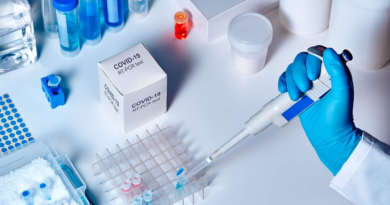Ca/OSHA Considering Readoption of COVID-19 ETS
On December 16, 2021, the Occupational Safety and Health Standards Board of California’s Division of Occupational Safety and Health (Cal/OSHA) will meet to consider the readoption of the COVID-19 Emergency Temporary Standard (ETS) with substantial changes and updates to take effect on January 14, 2022.
The original Cal/OSHA COVID-19 ETS took effect on November 30, 2020, and the workplace standards were updated on June 17, 2021, to take into account that vaccines were available. Following the issuance of the COVID-19 ETS in November 2020 and the update, the Cal/OSHA Standards Board will vote to adopt this newest proposal on December 16, 2021. A vote for a permanent regulation will likely happen before the Cal/OSHA ETS expires after 90 days.
In anticipation of the December vote, Cal/OSHA released an updated draft on December 3, 2021. The updated text proposes a number of changes to the previous language:
-
COVID-19 would no longer be defined as an infectious disease and would instead simply be defined as “the disease caused by SARS-CoV-2.”
-
Acceptable tests would be expanded beyond viral tests to include home tests, over-the-counter tests, and point-of-care tests. The proposed regulation would exclude tests that are both self-administered and self-read unless observed by the employer or an authorized telehealth proctor.
-
The proposal would require face coverings to be made of “fabrics that do not let light pass through when held up to a light source” and be a “solid piece of material without slits, visible holes, or punctures [that] fit[s] snugly over the nose, mouth, and chin.” It is unclear what level of light would be permissible or how this vague term will be interpreted.
-
The definition of “worksite” would exclude remote work locations.
-
The definition of the workplace would be expanded to include employees who were “on the premises at the same worksite.”
-
Covered employers would be required to provide testing to vaccinated workers who have close contact in the workplace. Currently, covered employers do not have to offer testing to vaccinated workers.
-
Exclusion requirements would not apply to employees who wear face coverings and maintain 6 feet of distance from others at the workplace for 14 days following the last date of close contact. This would include vaccinated workers who do not develop symptoms after an exposure. (Under the current regulation, these vaccinated workers can return to work without additional precautions.)
-
Return-to-work requirements for persons who had close contacts would be modified for employees who wear face coverings, maintain six feet of distance, and take COVID-19 tests at least five days following the last date of close contact.
-
The exception to the return-to-work criteria for employers with critical staffing shortages would be omitted.
-
Exemptions for fully vaccinated individuals with respect to the provision of face coverings, testing, and ventilation in housing would be omitted. This very substantial change would mean that employers would have to adjust their COVID-19 Prevention Program.
© 2021, Ogletree, Deakins, Nash, Smoak & Stewart, P.C., All Rights Reserved.National Law Review, Volume XI, Number 341





